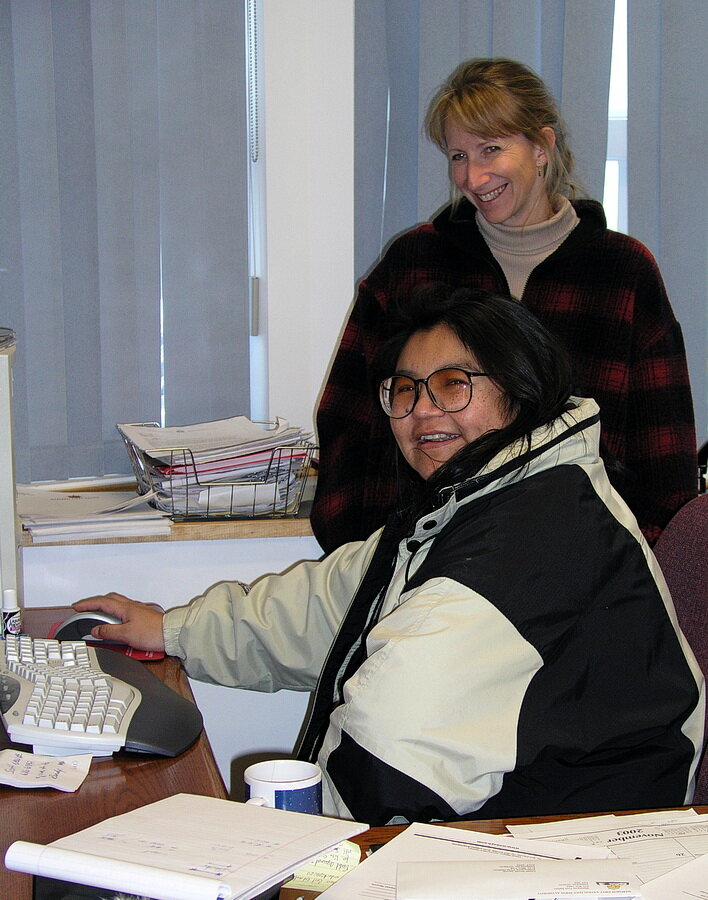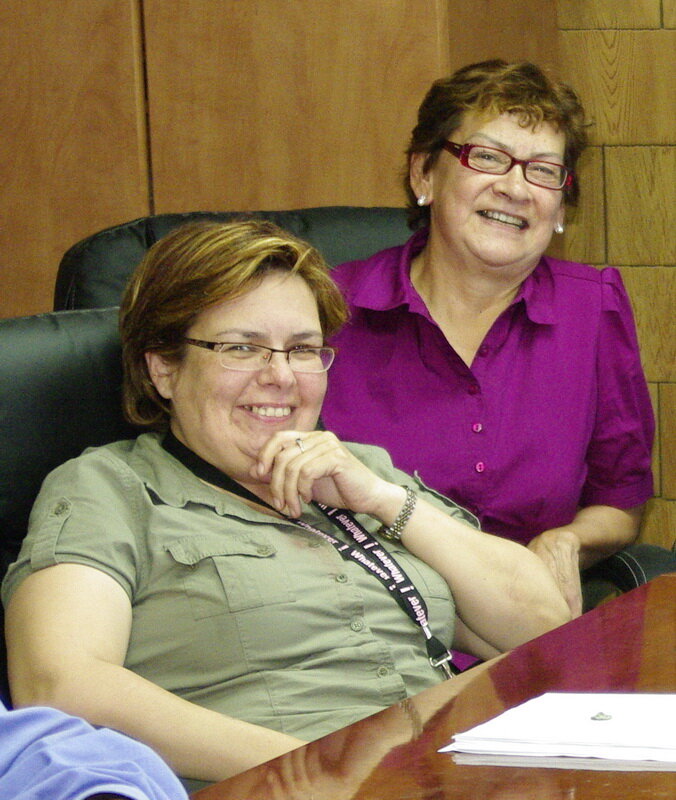Far North Friday #58: Leaders
In this far north story, I reflect on four First Nation women leaders who I had the privilege to know and, in some cases, to work with in Ontario’s far north. Each left a lasting impression on me.
I have always been impressed with Far North First Nation leaders. They are not the hierarchical, chain of command “boss”. Rather, they are the voice of their people. They take time to listen to their people. They echo back what they have heard. They test their understandings of what the people say. They synthesize consensus-based interests. They formulate community positions. It is not easy to address community needs while responding to other federal and provincial government initiatives. Serving the people is a high honour, but it is a physically, emotionally, and sometimes spiritually demanding calling. They are also fundamentally people - like you and me.
Elizabeth Atlookan (Photo 1) was a Chief of Eabametoong First Nation (Fort Hope) several years ago at a time when several far north First nation communities were faced with the implications of possible mineral development in, or close to, their homelands. I can only imagine how challenging that time was for Chief Atlookan. But the reflection I share is not about ongoing challenges of that time. Rather, I share insight about Chief Elizabeth as a person. We visited Chief’s home after an evening of fishing. We did our best to fillet the fish. We did a really bad job! Chief Elizabeth recognized how unskilled our knives were. She quietly intervened without fuss, salvaged the unfilleted fish, and repaired the damaged fillets. Filleting is a skill and an art. Intervention is a skill and an art. Chief Elizabeth mastered those skills and arts and showed us the way without loss of face. Special.
Photo 1: Chief Elizabeth Atlookan, Eabametoong First Nation, speaking at a special community event to recognize the long-standing service of a community member. Image by Andy Fyon, Aug. 17, 2015.
Elsie Macdonald (Photo 2) was a Chief of Webequie First Nation and a long-serving councillor for her band. I forget the number of years she has served her people, but it is many. Elsie and two elders, Ananias Spence and Josie Jacob, attended virtually all the meetings we had in community over 10 years. Elsie is quiet. You have to listen carefully - a skill I have not yet fully developed. During one of our meetings in Webequie, I suddenly experienced what I thought was an epiphany! I echoed back my revelation with pride. Elsie smiled and quietly said “Andy, that is what I have been trying to tell you that for 5 years!” In a very gentle way, Elsie reminded me how important it was to listen carefully. Elsie, the person, guided us over the years. Special.
Photo 2: Elsie Macdonald was a Chief of Webequie First Nation and a long-serving councillor for her band. Elsie has served her people in many ways for many years. She attended virtually all our project and political meetings held in community. In this photo, Elsie was working away in he chilly office. Standing behind Elsie, wearing the dark red shirt, is Lori Churchill, who was with Ontario Geological Survey as the project and Results Management Coordinator at the time. Photo composed by Andy Fyon, November 7, 2003 - wow, a long time ago.
Therese Spence (Photo 3: front) was a Chief of Attawapiskat First Nation. Back in 2012/13, Chief Theresa Spence was in Ottawa, fasting in a tent - a focal point of the “Idle No More” movement. She wanted to negotiate with the Prime Minister to improve living conditions for Canada’s indigenous people. You might have a mental picture of what such a Chief would look like and how they would have acted. But what does a Chief look like and how do they act when they transform into a grandmother (Cree nokom)? I took my 4 year old grandson to visit Chief Spence in her tent. My grandson had a great time hauling wood to the ceremonial fire and meeting people from across Canada. Once inside the tent, when Chief Spence greeted my grandson, she transformed from a Chief into a grandmother and asked permission to give him a big hug. She accepted a small gift from my grandson. I have no idea if she recalls that meeting, but she reminded me we are all human - even Chiefs. Special.
Photo 3: Theresa Spence (front), who was Deputy Chief at the time this photo was composed and who is a former Chief of Attawapiskat First Nation, and Theresa Hall (back) who was the Chief of Attawapiskat First Nation at the time this photo was composed, during a meeting back on a warm day. Photo composed by Andy Fyon, August 27, 2008.
Chief Theresa Hall (Photo 3, back) was also a Chief of Attawapiskat First Nation. In Attawapiskat, she encouraged me to attend a function intended to help those in need. Because the function was limited to a set number of participants, I wondered if I should attend - community people first. Chief Hall reassured me it was appropriate and good to attend. During the function, I momentarily felt that I should not “be here”, but, I came away with an understanding of deep injustices and wounds I will not describe, expressed in ways I cannot share. The next day Chief Hall asked about my experience. She quietly reassured me it was OK to be there. It was part of my learning. Special.
Although some I know better that others, each of these leaders quietly left a lasting impression with me. Each helped me understand a world that is a mystery to many. I shared, and continue to share, those understandings with others when appropriate.
Although I highlight four leaders, I met many leaders across the far north. Some carry a title, like chief or councillor. Others are community people without a formal title, who demonstrate their wisdom and leadership quietly. I acknowledge and recognize all of you.
Have A Question About This Note?
March 12/21 (Facebook March 12/21)



